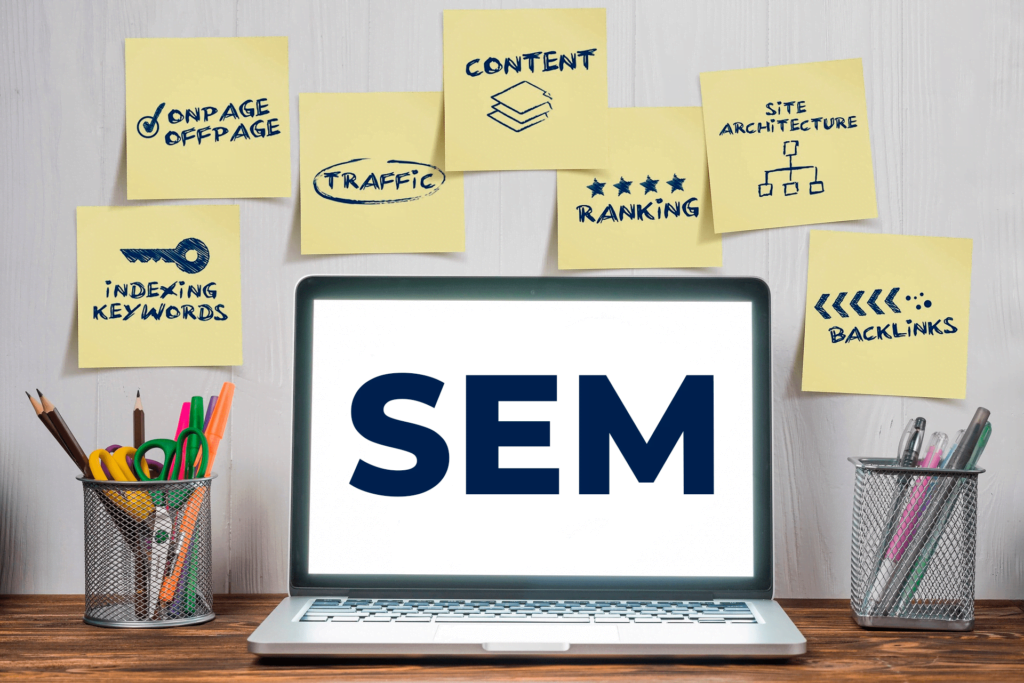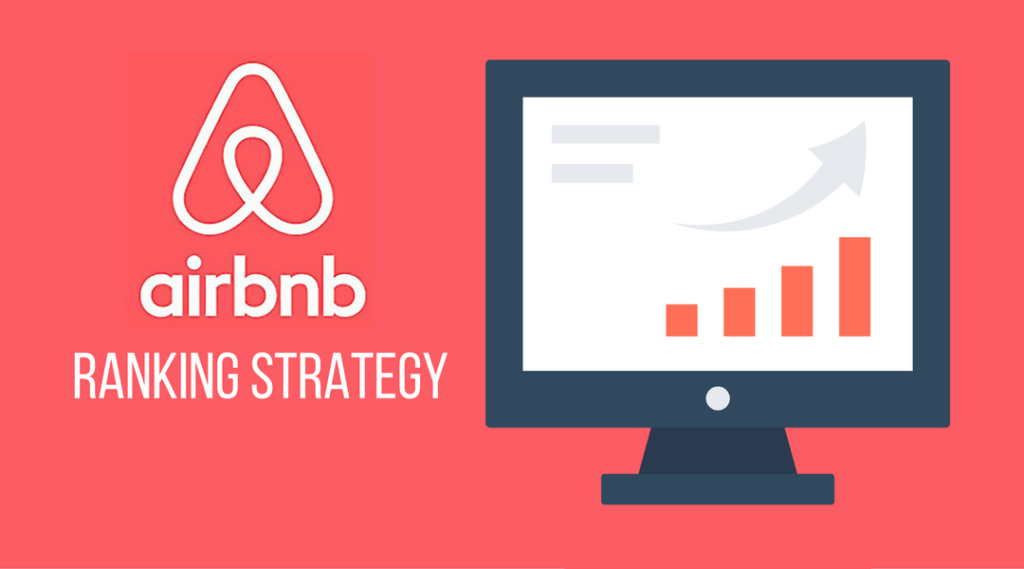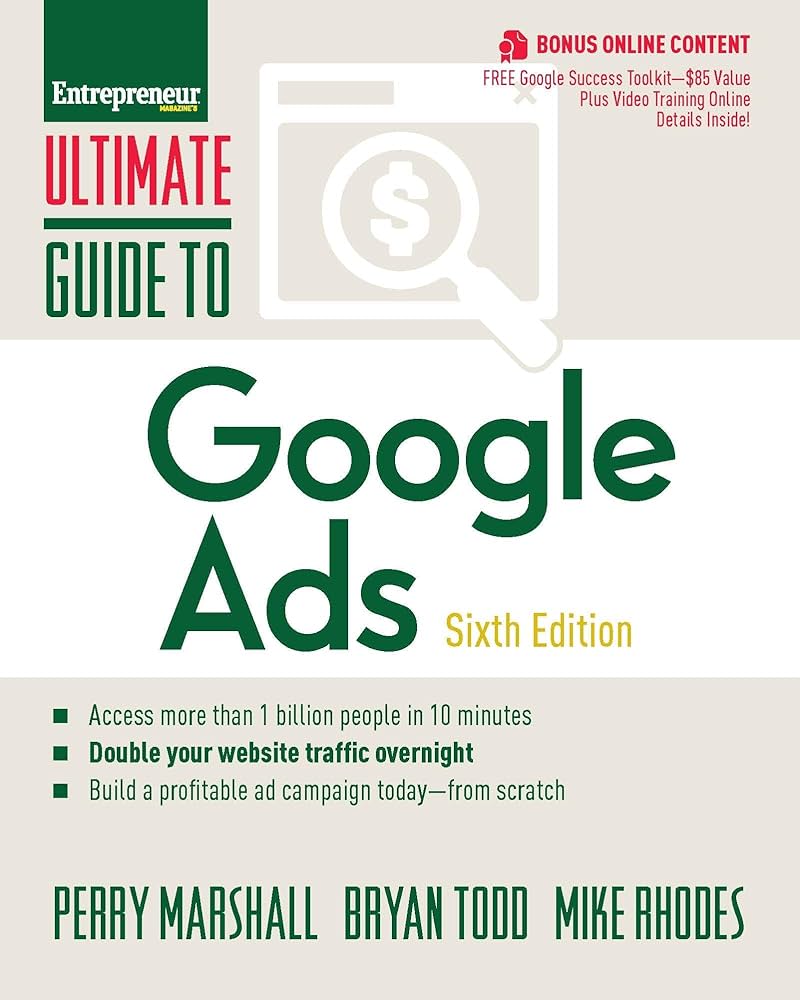Navigating the complex world of online marketing can be challenging, especially when it comes to understanding the separate roles of search engine marketing (SEM) and search engine optimization (SEO).
Both strategies are vital to increasing website visibility and driving traffic, but they work through different methods and offer unique benefits.
This comprehensive guide explores the intricacies of SEM, examines how it differs from SEO, shares insights from experts in the field, provides real-world examples, and provides valuable resources to help you use these tools effectively. Powerful marketing recommends.
What is Search Engine Marketing (SEM)?
Search engine marketing (SEM) refers to an approach to online marketing that increases website traffic by paying search engines like Google, Bing, and Yahoo.
Paid ads are displayed in search results when users search for keywords related to your products or services.
The main purpose of SEM is to attract targeted visitors to your website and encourage them to take a desired action, such as purchasing, signing up or downloading.
Understanding Search Engine Marketing (SEM)
Search engine marketing (SEM) is a type of digital marketing that uses paid advertising to help increase traffic to your website by improving its position in search engine results pages (SERPs).

SEM encompasses a variety of activities that primarily include pay-per-click advertising (PPC) and other paid search engine advertising methods.
Key components of SEM
Search Engine Marketing (SEM) consists of several components that work together to increase traffic to your website through paid advertising in search results.
The key components of SEM are:
Click advertising (PPC):
Click ads are the main pillar of SEM. In this model, you pay the search engine for each click on your ad.
Google Ads is the most popular click-through advertising platform and allows you to display your ads in Google search results, partner websites and other platforms.
Ad Auction:
According to the keywords you choose, search engines like Google hold an advertising auction.
In this auction, advertisers compete for keywords related to their products or services.
Factors such as bid amount, ad quality and keyword relevancy score determine the auction winner and thus the ad display position in search results pages (SERPs).
Ad text and landing pages:
Your ad text is the first thing users see in search results.
Therefore, it is very important to write an attractive ad text related to keywords and user needs.
Also, the pages that users are directed to after clicking on the ad (landing pages), should be specifically designed and optimized to convert visitors into customers.
SEM Targeting Options:
Targeting Options allow you to accurately target your ads based on various criteria such as keywords, geographic location, devices used by users (computer, mobile, etc.) and demographics (age, gender, etc.) Set goals.
This precise targeting helps you to deliver your ads to the audience related to your business and as a result, get more returns from your advertising campaigns.
Differences between SEM and SEO
Search Engine Marketing (SEM) and Search Engine Optimization (SEO) are both strategies that help increase your website’s visibility in search results, but they work with different approaches.
Here’s a look at the key differences between SEM and SEO:
Cost
SEM: is a payment based method. You pay for each click or impression of your ad.
This allows you to control your budget and adjust it based on campaign performance.
SEO: mainly relies on time and effort. SEO-related costs are usually spent on tools and resources that help you optimize your website, rather than directly paying for clicks.

SEO is a long-term investment in generating organic traffic.
Speed of results
SEM: brings faster results.
Your ads can be displayed immediately after launching the campaign and drive traffic to your website.
This makes SEM ideal for short-term campaigns or promoting timed offers.
SEO: It usually takes longer to see significant results.
SEO includes optimizing content, backlinks, and other tactics to improve a website’s organic ranking.
As a result, SEO benefits are more sustainable in the long run.
Longevity (sustainability)
SEM: When your ad budget runs out, ads will stop showing.
In other words, the visibility of your website is directly related to the cost It has advertisements.
SEO: SEO efforts lead to long-term benefits and even if the optimization activities stop, the ranking of the website is still maintained.
Quality content and valid backlinks continue to attract traffic over time.
Visibility
SEM: Ads are displayed at the top of the pages in search results with the tag “Ads”, thus providing instant visibility to your website.
This top position can quickly drive significant traffic to your website.
SEO: Achieving high organic rankings requires constant effort and continuous optimization.
However, organic listings are perceived by users as more reliable results.
Click through rate (CTR)
SEM: Ads often have a higher click-through rate initially due to their prominent position, but over time they may experience “ad fatigue”, meaning that users no longer pay attention to them.
SEO: Organic results attract more clicks over time, especially if they rank highly, as users tend to trust organic listings more than paid ads.
final conclusion
SEM and SEO are both powerful tools for digital marketing and can be used independently or together, depending on your specific goals and needs.
Here is a summary of key points to help you choose the right strategy:
. To achieve quick results and increase website traffic immediately, SEM is the right solution.
. SEO is an ideal option to generate sustainable organic traffic and improve website credibility in the long run.
. A combination of SEM and SEO can help you reach a wider audience and achieve your digital marketing goals effectively.
. When deciding whether to use SEM, SEO, or a combination of both, it’s important to consider your budget, goals, and target audience.
. A comprehensive digital marketing strategy that incorporates both methods can help you get the most out of your online presence.
Expert opinions about SEM and SEO
Neil Patel, Digital Marketing Specialist:
“SEM is a great way to quickly drive targeted traffic, but it must be used alongside SEO.
While SEM can create immediate visibility, SEO builds a sustainable online presence over time.”
Rand Fishkin, SEO expert:
“SEO is about getting your position in search results through relevance and credibility.
SEM, on the other hand, allows you to buy your position for a fee.
Both methods have their place in a balanced digital marketing strategy.”
Real World: Examples of SEM Application
Search Engine Marketing (SEM) has many applications in the real world.
Here are some examples of successful brands that have used SEM to achieve their marketing goals:
Amazon:
E-commerce giant Amazon uses SEM extensively to promote its products.
By participating in ad auctions for relevant keywords, Amazon ensures that its products appear at the top of search results, thereby gaining significant traffic and sales.
Their use of precise targeting and effective ad copy has made their Pay Per Click (PPC) campaigns very successful.
Airbnb:
Accommodation rental website Airbnb uses SEM to attract travelers looking for accommodation.

By targeting specific keywords related to tourist destinations, Airbnb ads appear prominently in search results, increasing accommodation bookings and brand visibility.
Their dynamic ad campaigns are tailored to seasonal trends and local events, increasing engagement with users.
Nike:
The famous sports brand Nike uses SEM campaigns to introduce its new products and advertisements.
Nike drives instant traffic to its website, increases sales, and strengthens brand presence through precisely targeted click-through ads.
Their strategic use of video ads and interactive content in SEM has also set them apart from the competition.
In addition to these commercial giants, other small and large businesses have also benefited from SEM to achieve success. Here are some industries and common examples of SEM usage:
Hospitality Industry: Hotels and travel booking websites use SEM to advertise their hotels, resorts and travel packages based on the user’s location, travel date and budget.
Educational services: Universities, colleges, and online courses use SEM to attract potential students by advertising academic programs, educational events, and financial aid based on the user’s academic interests and educational level.
Financial services: Banks, credit card companies, and insurance companies use SEM to promote their financial products and services, such as loans, credit cards, and insurance, based on the user’s financial needs.they do.
As seen in these examples, SEM is an effective way to reach a targeted audience and drive traffic to your website.
With proper use of SEM strategies, you can significantly increase your brand awareness, collect more leads, and ultimately, increase your sales.
Best practices for implementing SEM
In order to achieve the best results through Search Engine Marketing (SEM), it is important to implement the right practices.
Here are some SEM best practices:
1. Keyword research and selection
Effective SEM campaigns begin with thorough keyword research.
Use tools like Google Keyword Planner to identify high-traffic keywords relevant to your business.
To have more targeted and cost-effective campaigns, focus on long-tail keywords.
Long tail keywords are longer phrases that are more detailed and have less competition.
2. Writing attractive ad text
Your ad text should be clear, attractive and relevant to the target keywords.
Emphasize the strengths and unique features of your business, use a strong call to action (CTA) and make sure the ad text is relevant to the content of the landing page.
3. Landing page optimization
Make sure that the pages that your ads lead users to (landing pages) are optimized for conversion.
This optimization includes having a clear call to action (CTA), relevant content, fast loading speed and user-friendly design.
4. Using A/B testing
A/B test your ads regularly to determine which versions perform better.

Test different headlines, ad copy, calls-to-action (CTAs) and landing pages to continuously improve your campaign effectiveness.
A/B testing allows you to compare two or more different versions of the same variable and see which one performs better.
5. Monitoring and adjusting campaigns
Track the performance of your SEM campaigns using metrics such as click-through rate (CTR), conversion rate, and return on advertising investment (ROAS).
Use this data to make informed adjustments to your bids, keywords, and ad text.
By following these best practices, you can run successful SEM campaigns that help you reach targeted audiences, increase website traffic, and ultimately, achieve your marketing goals.
Application tools and platforms for SEM
For successful execution of Search Engine Marketing (SEM) campaigns, it is very important to use the right tools and platforms.
Here are some popular and useful tools in the field of SEM:
1. Google Ads
. The most well-known and widely used platform is SEM.
. Allows you to create, manage and optimize Pay Per Click (PPC) campaigns.
. It provides accurate analytical tools and various types of advertising formats to suit the needs of different businesses.
2. Microsoft Advertising (formerly known as Bing Ads)
. It allows you to reach another segment of search users.
. It has similar capabilities to Google Ads and can be a valuable addition to your SEM strategy.
3. SEMrush
. It is a comprehensive tool for both SEM and SEO.
. It provides keyword research, competitor analysis, and performance tracking to help you optimize your campaigns effectively.
4. SpyFu
. It allows you to see the keywords your competitors are bidding on and how their ads are performing.
. This competitive information can help you refine your SEM strategy.
Other useful tools:
Ahrefs: Similar to SEMrush, it offers a collection of SEO and SEM tools.
Moz Pro: is an ideal tool for keyword research, on-page SEO analysis and website ranking tracking.
WordStream Advisor: helps manage Google Ads campaigns effectively by automating time-consuming tasks and providing actionable recommendations.
This list only includes some popular tools, and depending on your needs and budget, there are other tools that can help you manage SEM campaigns.
Recommended books for further reading on SEM and SEO
For those looking to deepen their understanding of Search Engine Marketing (SEM) and learn how to effectively implement SEM strategies.
Here are some practical books:
Ultimate Guide to Google AdWords book by Perry Marshall and Mike Rhodes
This book is known as a comprehensive guide to mastering Google AdWords (now Google Ads).

Covering everything from the basics to advanced strategies, this book helps readers create effective PPC campaigns, optimize ad performance, and achieve ROI.Maximize the value.
Google AdWords for Beginners by Corey Rabazinski
Perfect for those new to SEM, this book provides a step-by-step guide to setting up and managing Google AdWords campaigns.
This book covers basic concepts, practical tips and common mistakes to avoid, making it a great starting point for beginners.
Facebook Killer Ads: Mastering Advanced Facebook Advertising Techniques by Marty Winterb
While this book focuses on Facebook advertising, it provides valuable insight into the principles of PPC advertising that can be applied to SEM.
This book covers targeting, ad creation, and optimization techniques and provides a broader understanding of paid advertising strategies.
Advanced Google AdWords by Brad Geddes
Advanced Google AdWords is ideal for those with little experience in SEM who want to take their skills to the next level.
This book covers advanced topics such as keyword research, ad copy writing, and bid management, providing expert advice and real-world examples.
Pay Per Click Search Engine Marketing: An Hour a Day by David Sztela and Joseph Kirschbaum
Designed for busy professionals, this book breaks down PPC management into daily tasks that can be accomplished in just one hour a day.
This book covers both introductory and advanced SEM concepts and provides practical advice for creating and optimizing PPC campaigns.
The Definitive Guide to Google AdWords: Creating Powerful and Diverse Marketing and Advertising Campaigns by Bart Weller and Laurie Callcott
This guide provides a thorough exploration of Google AdWords, from campaign setup to advanced strategies.
The book includes practical tips, case studies, and expert insights, making it an invaluable resource for anyone looking to improve their SEM skills.
Data Driven Marketing: 15 Marketing Metrics Everyone Should Know by Mark Jeffery
While not exclusively about SEM, this book emphasizes the importance of data-driven decision making in marketing.
This book introduces key metrics and analytical techniques that are necessary to optimize SEM campaigns and measure their success.
PPC Advertising: 33 PPC Marketing Strategies for Google Adwords, Facebook Ads and More by Richard Stokes
This book provides an overview of PPC advertising on various platforms, including Google Ads and Facebook Ads.
The book covers 33 strategies to improve campaign performance, making it a practical guide for marketers looking to diversify their SEM efforts.
By exploring these books, you’ll gain valuable knowledge and practical skills to improve your SEM strategies, drive targeted traffic, and achieve your marketing goals.
Conclusion
Search Engine Marketing (SEM) and Search Engine Optimization (SEO) are both integral components of a strong digital marketing strategy.
Using paid advertising, SEM allows you to quickly get noticed and attract a target audience.
This method is ideal for specific campaigns and achieving immediate results.
On the other hand, SEO focuses on building organic traffic and long-term online presence through quality content and strategic optimization.
By understanding the unique strengths and uses of SEM and SEO, businesses can create a balanced approach that takes advantage of the quick impact of paid advertising and the lasting benefits of organic search optimization.
Use expert opinions and real-life examples to guide your strategy, and read recommended books to increase your knowledge of these essential digital marketing techniques.
Integrating SEM and SEO into your marketing efforts can significantly improve your online presence, drive more traffic, and ultimately help you achieve your business goals.
Embrace these strategies with open arms to stay ahead in the competitive digital world and ensure continued growth and success.
The key to success in the digital world!
Are you ready to climb to the heights of success in the digital world?
Roham Global Creative Agency will accompany you on this adventurous path by providing comprehensive and specialized services in the field of digital marketing.
What services do we offer you at Roham Global?
Professional Website Design: An attractive and user-friendly website that can easily convert visitors into loyal customers.
Search Engine Optimization (SEO): Increase your organic traffic and flood new audiences by improving your website’s ranking in Google search results.
Content Marketing: Creating attractive and valuable content that attracts your audience and engraves your brand in their minds.
Digital advertising: Implementation of targeted advertising campaigns on Google, social networks and other digital platforms with high efficiency and impressive conversion rates.
Social Network Management: Create and manage social pages that increase engagement and awareness of your brand and make you a leader in your industry.
Contact us now and enjoy the following benefits:
Free and expert advice to determine the best strategy for your business
Detailed and principled planning to achieve your goals
Campaign implementation and managementDigital marketing with the highest quality
Periodic and detailed reports of campaign performance
An experienced and expert team who will be by your side with full enthusiasm and commitment
Contact us now!
Phone: 0313-1319577 – 09386193002
Email: info@rohamagency.com
Create a bright and successful future for your business with Roham Global Creative Agency!
we are waiting for you!








